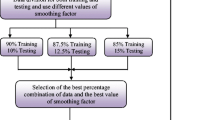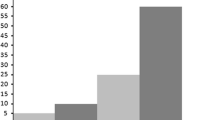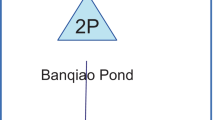Abstract
Accurate prediction of peak discharges due to embankment dam failure is essential to identifying and reducing potential for loss of life and damage in the downstream floodplain. Because, when a dam fails the damage is certain, but the extent of this damage cannot be evaluated in advance. The loss of life and property damage can vary depending on flood area and population. In order to cope with embankment dam breaching and to take necessary steps beforehand many researchers worked on parametric breach models based on Regression Analysis (RA) to estimate the peak outflow from a breached embankment dam since 1970s. RA is a widely-used approach that could provide acceptable results. Since, this approach bears restrictive assumptions, direct application of RA ignoring these assumptions might cause pitfalls and biased calculations. In this study, it is shown that previous works generated by RA gives biased calculations and a new alternative approach, based on Artificial Neural Networks (ANN), is suggested in replacement of classical RA, which gives more accurate results according to both numerical error criteria and scientific background.
Similar content being viewed by others
References
ASCE/EWRI Task Committee on Dam/Levee Breachin. (2011). “Earthen embankment breaching.” J. Hydraul. Eng., Vol. 137, No. 12, pp. 1549–1564, DOI: 10.1061/(ASCE)HY.1943-7900.0000498.
Baker, S., Ponniah, D., and Smith, S. (1999). “Survey of risk management in major U.K. companies.” Journal of Professional Issues in Engineering Education and Practice, Vol. 125, No. 3, pp. 94–102.
Bourdes, V., Bonnevay, S., Lisboa, P., Defrance, R., Perol, D., Chabaud, S., Bachelot, T., Gargi, T., and Negrier, S. (2010). “Comparison of artificial neural network with logistic regression as classification models for variable selection for prediction of breast cancer patient outcomes.” Advances in Artificial Neural Systems, Vol. 2010, Article ID 309841, p. 10, DOI: 10.1155/2010/309841.
Cacuci, D. G., Ionescu-Bujor, M., and Navon, I. M. (2005). Sensitivity and uncertainty analysis: Applications to large-scale systems, CRC Press LLC, Boca Raton.
Costa, J. E. (1985). Floods from dam failures, U.S. Geological Survey Open-File Rep, No. 85-560, U.S. Geological Survey Denver, Colo.
Cullen, A. C. and Frey, H. C. (1999). Probabilistic techniques in exposure assessment, Springer, New York.
Dorf, R. C. (1997). The electrical engineering handbook, CRC Press LLC, Boca Raton.
Embrechts, M. J., Arciniegas, F., Ozdemir, M., Breneman, C. M., Bennett, K., and Lockwood, L. (2001). “Bagging neural network sensitivity analysis for feature reduction for in-silico drug design.” 2001 INNSIEEE International Joint Conference on Neural Networks, Vol. 4, IEEE Press, Washington, DC, p. 2478.
Erdik, T., Savci, M. E., and Şen Z. (2009). “Artificial neural networks for predicting maximum wave runup on rubble mound structures.” Expert Systems with Applications, Vol. 36, No. 3, pp. 6403–6408.
Froehlich, D. C. (1995). “Peak outflow from breached embankment dam.” J. Water Resour. Plann. Manage., Vol. 121, No. 1, pp. 90–97.
Fraedrich, D. and Goldberg, A. (2000). “A methodological framework for the validation of predictive simulations.” European Journal of Operational Research, Vol. 124, No. 1, pp. 55–62.
Garson, G. D. (1991). “Interpreting neural network connection weights.” Artif. Intell. Expert., Vol. 6, No. 6, pp. 47–51.
Gupta, S. and Singh, V. (2012). “Discussion of “Enhanced predictions for peak outflow from breached Embankment Dam.” by Christopher, I. Thornton, Michael W., Pierce, and Steven R., Abt.” J. Hydrol. Eng., ASCE, Vol. 17, No. 3, pp. 463–466, DOI: 10.1061/(ASCE)HE.1943-5584.0000470.
Hastie, T., Tibishrani, R., and Freidman, J. (2001). The elements of statistical learning: Data mining, inference and prediction, Springer, New York.
Hodouin, D., Thibault, J., and Flamemt, F. (1991). “Artificial neural networks: An emerging technique to model and control mineral processing plants.” 120th Annual Meeting of the Society of Mining, Metallurgy and Exploration Inc.
Howes, P. and Crook, N. (1999). “Using input parameter influences to support the decisions of feedforward neural networks.” Neurocomputing, Vol. 24, Nos. 1–3, pp. 191–206, DOI: 10.1016/S0925-2312(98)00102-7.
Huisman, P., Cramer, W., and Van, E. G. (1998). Water in the Netherlands, Netherlands Hydrological Society, Netherlands: Delft.
IBM SPSS Neural Networks 19 (2010). Copyright SPSS Inc, 1989, 2010.
Kemp, J. S., Zaradic, P., and Hansen, F. (2007). “An approach for determining relative input parameter importance and significance in artificial neural networks.” Ecol. Model., Vol. 204, No. 1, pp. 326–334.
Kirkpatrick, G. W. (1977). “Evaluation guidelines for spillway adequacy.” Proc., Engineering Foundation Conf., ASCE, Reston, Va., pp. 395–414.
Kleijnen, J. P. C. (1995). “Verification and validation of simulation models.” European Journal of Operational Research, Vol. 82, No. 1, pp. 145–162.
Marques de Sa, J. P. (2007). Applied statistics using SPSS, STATISTICA, MATLAB and R, Springer Berlin Heidelberg New York.
Mohammadi, K., Eslami, H. R., and Dardashti, Sh. D. (2005). “Comparison of regression, ARIMA and ANN models for reservoir inflow forecasting using snowmelt equivalent (a Case study of Karaj).” J. Agric. Sci. Techno., Vol. 7, No. 3, pp. 17–30.
Olden, J. D. and Jackson, D. A. (2002). “Illuminating the black box: A randomization approach for understanding variable contributions in artificial neural networks.” Ecol. Model, Vol. 154, No. 2, pp. 135–150.
Olden, J. D., Joy, M. K., and Death, R.G. (2004). “An accurate comparison of methods for quantifying variable importance in artificial neural networks using simulated data.” Ecol. Model, Vol. 178, No. 1, pp. 389–397.
Pan, J. Z. (2000). Merits of dams, Beijing: Tsinghua University Press, (in Chinese).
Poh, H., Yao, J., and Jascaronic, T. (1998). “Neural networks for the analysis and forecasting of advertising and promotion impact.” International Journal of Intelligent Systems in Accounting, Finance & Management, Vol. 7, No. 4, pp. 253–268.
Singh, V. P. (1996). Dam breach modeling technology, Kluwer Academic, Dordrecht, Netherlands.
Singh, V. P. and Scarlatos, P. D. (1988). “Analysis of gradual earth-dam failure.” J. Hydraul. Eng., Vol. 114, No. 1, pp. 21–42.
Singh, K. P. and Snorrason, A. (1982). Sensitivity of outflow peaks and flood stages to the selection of dam breach parameters and simulation models, State Water Survey (SWS) Contract Rep. No. 288, Illinois Dept. of Energy and Natural Resources, SWS Div., Surface Water at the Univ. of Illinois.
Singh, K. P. and Snorrason, A. (1984). “Sensitivity of outflow peaks and flood stages to the selection of dam breach parameters and simulation models.” J. Hydrol., Vol. 68, Nos. 1–4, pp. 295–310.
Soil Conservation Service (SCS) (1981). Simplified dam-breach routing procedure, Technical Release Rep. No. 66 (Rev. 1).
Tchaban, T., Taylor, M. J., and Griffin, A. (1998). “Establishing impacts of the inputs in a feedforward network.” Neural Comput Appl., Vol. 7, pp. 309–317, DOI: 10.1007/BF01428122.
Thornton, C. I., Pierce, M. W., and Abt, S. R. (2011). “Enhanced predictions for peak outflow from breached embankment dams.” Technical paper. Journal of Hydrologic Engineering, Vol. 16, No. 1, p. 81, DOI: 10.1061/_ASCE_HE.1943-5584.0000288.
Tronto, I. F. B., Da Silva, J. D. S., and Sant’ Anna, N. (2006). Comparison of artificial neural network and regression models in software effort estimation, NPE ePrint: sid.inpe.br/ePrint@80/2006/12.08.12.47 v1 2006-12-09.
U.S. Bureau of Reclamation (1982). Guidelines for defining inundated areas downstream from Bureau of Reclamation dams, Reclamation Planning Instruction Rep., Nos. 82–11.
Wahl, T. L. (1998). Prediction of embankment dam breach parameters: A literature review and needs assessment, Dam Safety Rep. No. DSO-98-004, Bureau of Reclamation, U.S. Dept. of the Interior, Denver.
Wahl, T. L. (2004). “Uncertainty of predictions of embankment dam breach parameters.” J. Hydraul. Eng., Vol. 130, No. 5, pp. 389–397.
Wang, C. (1993). Sense and nonsense of statistical inference, controversy, misuse and subtlety, Marcel Dekker, Inc.
Yoon, Y., Guimaraes, T., and Swales, G. (1994). “Integrating artificial neural networks with rule-based expert systems.” Decis Support Syst., Vol. 11, Issue 5, pp. 497–507, DOI: 10.1016/0167-9236(94)90021-3.
Author information
Authors and Affiliations
Corresponding author
Rights and permissions
About this article
Cite this article
Pektas, A.O., Erdik, T. Peak discharge prediction due to embankment dam break by using sensitivity analysis based ANN. KSCE J Civ Eng 18, 1868–1876 (2014). https://doi.org/10.1007/s12205-014-0047-8
Received:
Revised:
Accepted:
Published:
Issue Date:
DOI: https://doi.org/10.1007/s12205-014-0047-8




